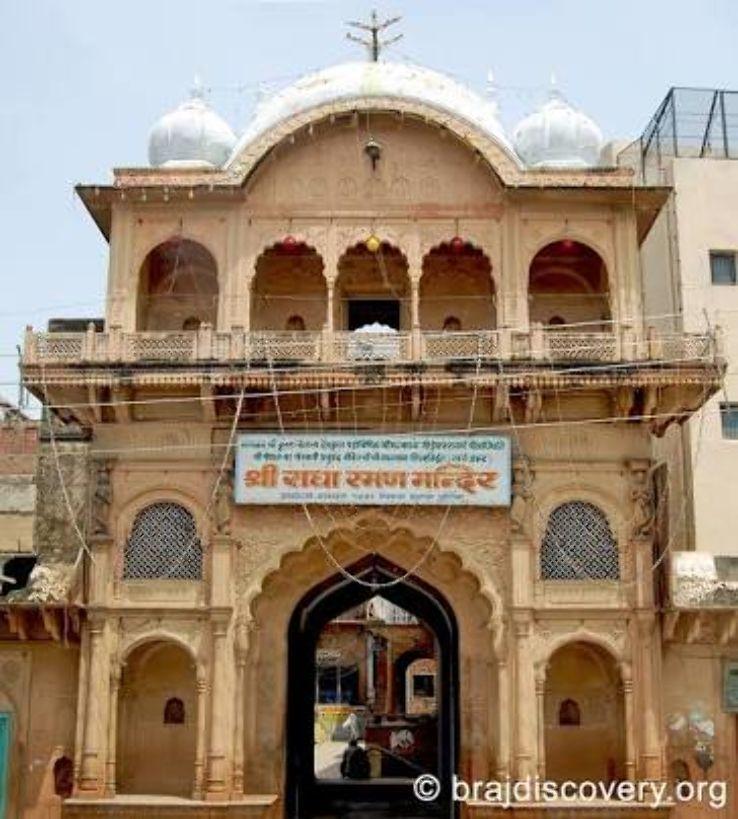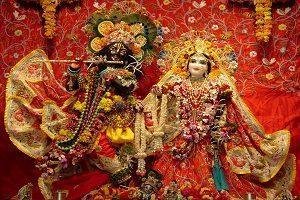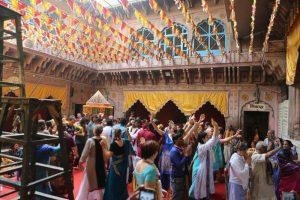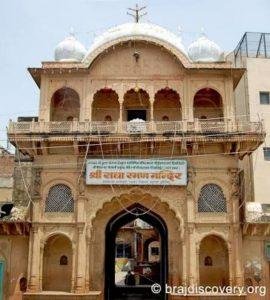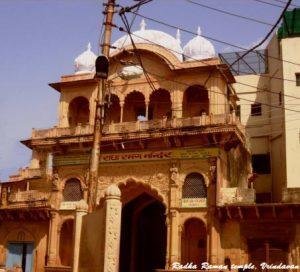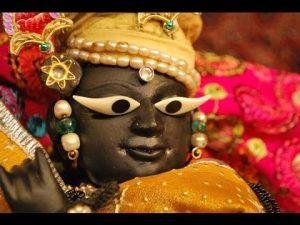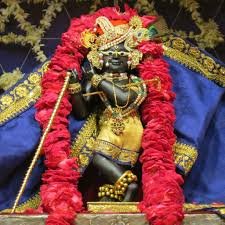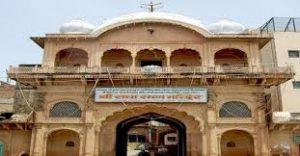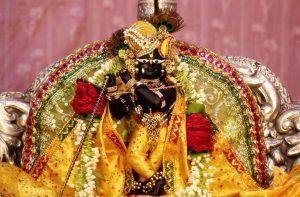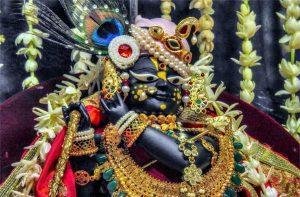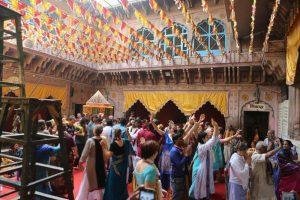Radha Ramana temple, Mathura, Uttar Pradesh
| Date built: | 1542 CE |
|---|---|
| Deity: | – |
| Architectural style: | – |
| Major festivals | – |
| Locale: | Vrindavan |
| District:: | Mathura |
| Address: |
sri Radha Raman Sewa Charitable Trust Chamunda Colony, Rajpur Bangar, Vrindavan, 281121. |
| Phone |
9927435368, 7984028939 |
Radha Raman (or Radharamana) is a famous image of Radha Krishna worshiped in Hinduism. There is a famous temple of this deity in Vrindavana.The self manifested deity out of the Saligram Shila, over 500 years old heritage temple where standards of worship are highest in Vrindavan. Radha Raman Temple was established by Gopal Bhatta Goswami. He is one of the six Goswamis of Vrindavan who followed the principles of Sri Chaitanya Mahaprabhu strictly. This beautiful Deity is self-manifested from a saligram sila and has a mystic smile on his face.
Sri Radha Raman’s Appearance Place is in the Radha-Raman Temple, next to the samadhi of Gopala Bhatta. Gopala Bhatta Goswami erected this temple. The deity was installed on the full moon day in the month of Vaishaka (April-May) in the year 1542. This event is celebrated every year by bathing the deity with milk and various other items. Gopala Bhatta Gosvami’s other shalagram-shilas are also worshiped in the temple. The samadhi of Gopala Bhatta is located next to Raman’s appearance place in Radha-Raman Temple.
Architecture
The quaint historic temple of Radha Raman has recently celebrated its 500th anniversary. It has a steady flow of local worshippers as well as pilgrims from around the world. It is notable for housing the image that is the oldest remaining in Vrindavan for the longest continuous period, as Radha Raman remained in Vrindavan during the iconoclastic raids by Mughal King of India Aurangzeb during the seventeenth century, when other images were removed to be hidden in safer places outside the city.Performances of classical Indian devotional music are offered in Radha Raman temple nightly.
Legend / Local stories
The self manifested deity out of the Saligram Shila, over 500 years old heritage temple where standards of worship are highest in Vrindavan. Radha Raman Temple was established by Gopal Bhatta Goswami. He is one of the six Goswamis of Vrindavan who followed the principles of Sri Chaitanya Mahaprabhu strictly. This beautiful Deity is self-manifested from a saligram sila and has a mystic smile on his face. Sri Radha Ramans Appearance Place is in the Radha-Raman Temple, next to the samadhi of Gopala Bhatta. It is said that there are markings of discs on the Deitys back and feet. The Deity of Radha-Raman is around 30cm (1 foot) tall. Gopal Bhatta Goswamis other saligram-shilas are also worshiped on the altar here. Radha-Ramanji is one of the few original Deities of the Goswamis still in Vrindavan. The standard of worship in this temple is very high. There is no Deity of Radha in this temple. The name of Radharani is worshiped in this temple, because according to scriptures the name and the person are considered non-different. There is a golden plate next to Krishna, which has the name of Radharani engraved into it.
A Deity of Radharani is not worshiped in this temple because the Deity of Radha-Raman is self-manifested and there was no Deity of Radharani self-manifested. The present temple was built in 1826 at the cost of 80 thousand rupees by Shah Behari Lallji from Lucknow, the grandfather of Shah Kundan Lall and Shah Fundan Lall, who built the Shahji Temple. Sri Chaitanya Mahaprabhus kaupina (cloth) and asana (seat), which Gopal Bhatta Goswami brought from Jagannath Puri, are also in this temple. The asana is black wood and is about 31cm (12) by 25cm (10). They are brought out to be seen by the public for six days a year. They can be seen on Gaura Purnima, the appearance day of Radha Raman, the actual day and day after the disappearance of Gopal Bhatta Goswami, Janmasthami and Nandotsava (the day after Janmasthami). There is a daily abhiseka of the asana with Yamuna water. There is no decay of the asana or any cracks, even after 450 years. For the raja bhoga offering, Radha Ramans pujaris first offer all of the bhoga (food) to Radha-Raman and the shalagrama shilas, and then they make a second offering to Srimati Radharani, and then a third offering for Gopal Bhatta Goswami. There are not three different plates, but the same plate is offered in the order above. The fires for cooking in the temple kitchen have been burning continuously for over 440 years, since the Deity was installed. This is so no foreign elements, such as matches, are used for ignition purposes. Before the present temple was built, there was another temple at the same place that is now the kitchen and prasadam area for the present temple.
Gopal Bhatta Goswamis Samadhi is to the left, after you enter the first gate from the street into the temple compound. After entering the temple compound you turn left and walk fifty metres (150 ft). He passed away at the age of 85, in 1596, exactly 100 years after the appearance of Lord Chaitanya. His disappearance day is celebrated in the month of Shravana (July-Aug) on the Shukla Panchami (5th) day. There are also smaller samadhis here of the previous sevaits (priests) of Radha-Raman. There is regular worship at this samadhi. Daily bhajans and kirtanas are chanted and the Srimad Bhagavatam is recited. Twice a day a full plate of Radha-Ramans maha-prasada is offered. They also offer him fresh drinking water. In a separate kitchen, five bhoga (food) offerings are prepared and offered to Gopal Bhatta Goswami. After the offerings, five aratis are performed. After the last arati of the day, Radha Ramans pujari give Radha-Ramans maha flower garlands to Gopal Bhatta Goswami. In the area of the present Radha-Raman Temple, there used to be a lake connected to the Yamuna River.
Photo Gallery
How to Reach:
Contact Details
Official Address

